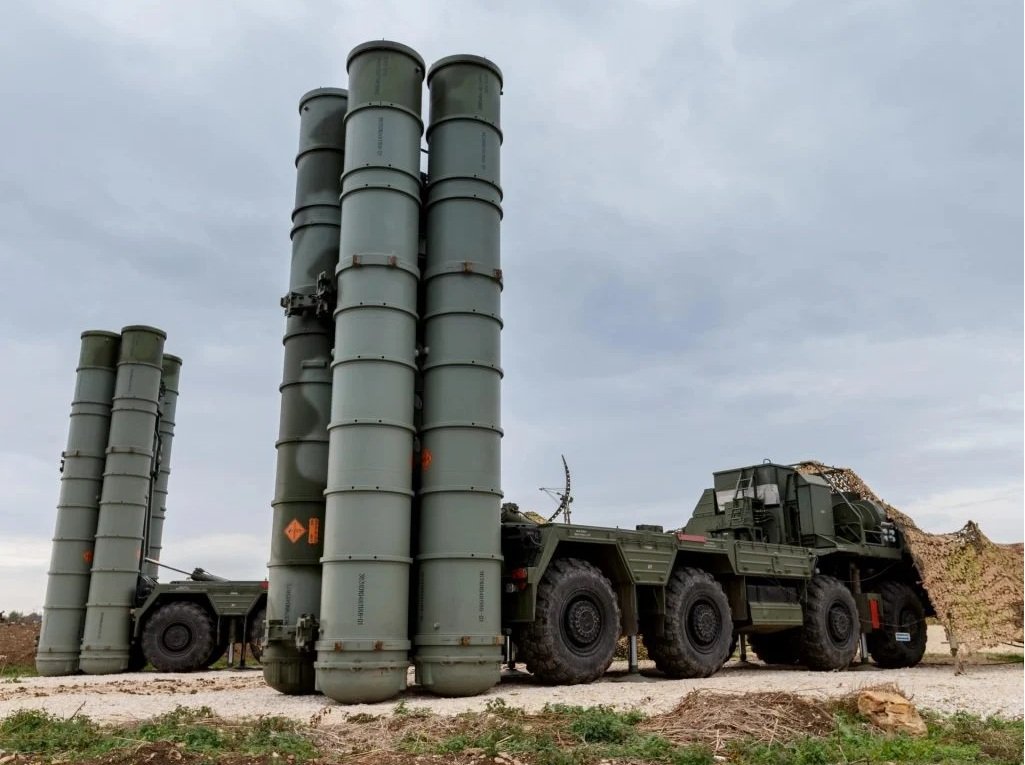Introduction
In the realm of modern warfare, air defense systems play a pivotal role in safeguarding national sovereignty. Among these, the S-400 Triumf, developed by Russia, stands out as a formidable force. Its advanced capabilities have not only redefined aerial defense strategies but have also stirred significant geopolitical discussions. This article delves into the technical prowess of the S-400 and the intricate political dynamics it has influenced globally.

The S-400 Triumf: A Technological Marvel
Development and Capabilities
The S-400 Triumf (NATO reporting name: SA-21 Growler) is a mobile, long-range surface-to-air missile (SAM) system developed by Russia’s Almaz-Antey. Introduced in 2007, it was designed to replace the aging S-300 systems S-400: and to counter a wide range of aerial threats.
Key features include:
- Multi-Target Engagement: Capable of tracking up to 300 targets and engaging 36 simultaneously.
- Extended Range: Depending on the missile variant, it can engage targets at distances ranging from 40 km to 400 km.
- Altitude Flexibility: Effective against targets flying at altitudes from 10 meters to 30 kilometers.
- Versatile Missile Compatibility: Supports various missile types, including the 40N6E, 48N6DM, and 9M96E2, allowing for layered defense.
Advanced Radar Systems
The S-400’s efficacy is largely attributed to its sophisticated radar systems:
- 91N6E Big Bird: Long-range surveillance radar with a range of up to 600 km.
- 92N6E Grave Stone: Multi-functional radar for tracking and guiding missiles.
- 96L6E Cheese Board: All-altitude detector radar, effective against stealth targets.
These radars provide 360-degree coverage and are resilient against electronic countermeasures, ensuring robust situational awareness.

Global Deployment and Strategic Significance
Russia’s Deployment
As the originator, Russia has extensively deployed the S-400 to protect its airspace and strategic assets. Notably, it has stationed units in:
- Kaliningrad: To monitor NATO activities in Eastern Europe.
- Crimea: Following its annexation, to assert control over the Black Sea region.
- Syria: To safeguard its interests and military bases in the Middle East.
International Acquisitions
The S-400’s advanced capabilities have attracted several countries:
- India: Procured five units in a $5 billion deal, with deliveries commencing in 2021. The system, dubbed “Sudarshan Chakra,” has been instrumental in countering aerial threats, including recent drone and missile attacks from Pakistan .
- Turkey: Acquired the system in 2019, leading to strained relations with NATO allies, particularly the U.S., which imposed sanctions and removed Turkey from the F-35 program.
- China: Became the first international customer, integrating the S-400 into its air defense network.
Geopolitical Implications
Strained Alliances
The acquisition of the S-400 by countries like Turkey and India has tested traditional alliances:
- Turkey-NATO Tensions: Turkey’s purchase led to concerns over interoperability and intelligence security within NATO, resulting in U.S. sanctions under the Countering America’s Adversaries Through Sanctions Act (CAATSA).
- India-U.S. Relations: Despite a growing strategic partnership, India’s deal with Russia raised eyebrows in Washington. However, recognizing India’s defense needs S-400: and regional challenges, the U.S. has so far refrained from imposing sanctions.
Regional Power Dynamics
The deployment of the S-400 has shifted regional military balances:
- South Asia: India’s possession of the system provides a significant edge over Pakistan, enhancing its ability to neutralize aerial threats and assert air superiority.
- Middle East: Russia’s deployment in Syria serves both defensive and strategic purposes, deterring potential adversaries and solidifying its influence in the region.
Operational Effectiveness
Combat Performance
The S-400 has demonstrated its prowess in various scenarios:
- India-Pakistan Escalations: In recent confrontations, India’s S-400 systems effectively intercepted and neutralized Pakistani drones and missiles, showcasing their operational readiness S-400: and strategic value .
- Syrian Conflict: While not actively engaged in combat, the presence of the S-400 in Syria has acted S-400: as a deterrent against potential airstrikes from adversaries.
Limitations and Challenges
Despite its strengths, the S-400 faces certain challenges:
- Integration Issues: Incorporating the system into existing defense networks, especially those reliant on Western technology, poses interoperability challenges.
- Countermeasures: Advanced electronic warfare tactics and stealth technologies continue to evolve, potentially challenging the S-400’s detection and interception capabilities.
The Future of Air Defense
The success of the S-400 has spurred developments in air defense technology:
- S-500 Prometey: Russia’s next-generation system aims to counter hypersonic missiles and low-orbit satellites, pushing the boundaries of air defense.
- Global Competitors: The U.S. continues to advance its Terminal High Altitude Area Defense (THAAD) and Patriot systems, while S-400: other nations invest in indigenous solutions.
Conclusion
The S-400 Triumf stands as a testament to Russia’s engineering prowess and strategic foresight. Its deployment has not only enhanced the air defense capabilities of its operators S-400: but has also reshaped geopolitical alliances and defense strategies worldwide. As aerial threats become more sophisticated, systems like the S-400 will play a crucial role in maintaining the delicate balance of power in an increasingly complex global landscape.
Read more https://magazinesnove.com/e-bar-robot-revolutionizing-elderly-care-with/


